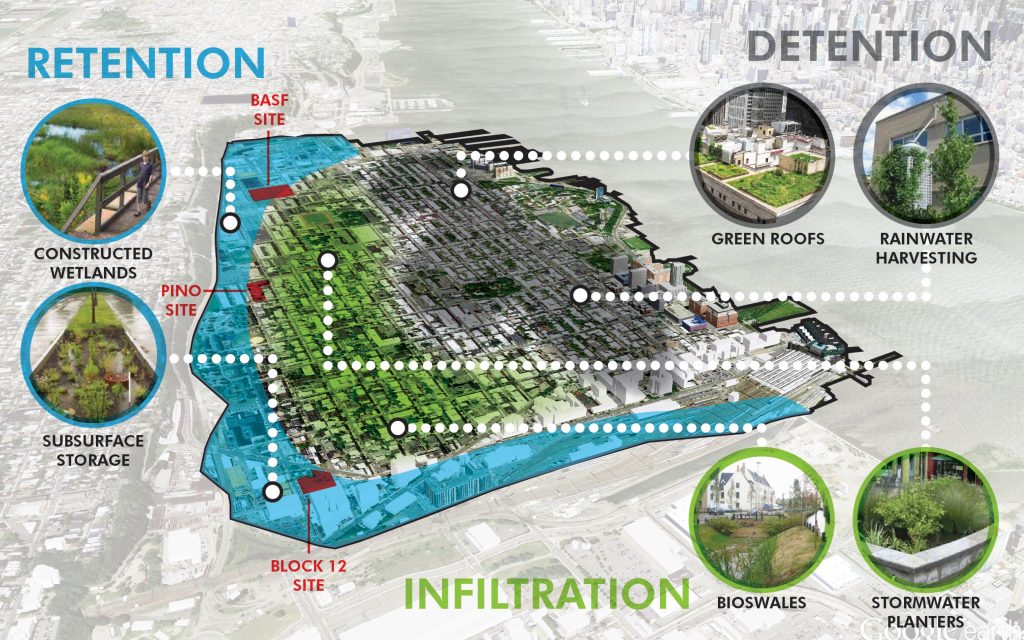
STORM WATER (RAINWATER) MANAGEMENT
Storm water (rainwater) is water that comes from precipitation and ice/snow melt – it either soaks into exposed soil or remains on top of impervious surfaces, like pavement or rooftops. Stormwater will eventually evaporate off of a level surface, but most often it flows as runoff to another location.
Storm water (rainwater) runoff is any water running off a land surface before it reaches a natural water body. It occurs when the rate of precipitation is greater than it can infiltrate, or soak, into the soil. Runoff also occurs when the soil is saturated. Runoff remains on the surface and flows into streams, rivers, and eventually large bodies such as lakes or the ocean.
Movement of this storm water(rainwater) across the soil causes erosion. It can also carry and deposit untreated pollutants, such as sediment, nutrients and pesticides, into surface-water bodies.
Impervious surfaces such as driveways, sidewalks, parking lots and streets block rainfall and other precipitation from infiltrating naturally into the ground, leading to even more stormwater and potential pollutant runoff.
Most of the world water problems such as flooding, drought, water pollution, water shortage are all related to rainwater. Due to climate change and urbanization, water problems are increasing throughout the world in both developing and developed countries. By proper rainwater management, we can reduce the risk of such problems and enhance the resilience.
Storm water (Rainwater) management solutions are techniques used to reduce rainwater runoff from causing damages, flooding and dispersing pollutants. Stormwater management involves detaining, retaining, or providing a discharge point for rainwater to be reused or infiltrated into the groundwater
One of the solutions designed to manage storm water (rainwater) is Rainwater Harvesting. Rainwater Harvesting (RWH) offers a small-scale best management practice to reduce stormwater runoff and the problems associated with it. By harvesting the rainfall and storing it for later use or direct groundwater recharge, water is slowly released back into the soil and then moves into groundwater table, providing a steady supply of water to local streams and river.
Rainwater harvesting can be used to achieve a source control of rainwater, as it significantly reduces the peak flow and volume of rainwater runoff.
Collecting and Using rainwater strengthens the hydrological cycle, reduces storm water runoff and limit the demand for water from well, lakes, reservoirs and rivers. It’s a self-sufficient renewable water source that eliminates the need to rely on water treated with chemicals.
USES OF RAINWATER
- Landscaping
- In-home Use
- Fire protection
- Agriculture
- Industrial
Other Storm water (Rainwater) management Solutions
- Green Roofs
- Permeable Surfaces
- Rain Gardens
- Silt Removal
- Swales
- Infiltration Trench
- Soakaway
- Bioretention
- Ponds
- Wetlands
- Detention Basins
- Infiltration Basins
- Geocellular /Modular Systems
Read more about these solutions in our coming posts or call +2348158942188 to discuss any of these solutions
